| |
OLEG PENKOVSKY'S JOB WAS TO ELIMINATE THE SOVIET HIGH COMMAND WITH
A "DAVY CROCKET" MINI-NUKE BEFORE THEY COULD ACTIVATE THE
"SAMSON OPTION" OR DOOMSDAY DEVICE!! |
|
Oleg Penkovsky was the Russian Guy Fawkes....Oleg means "holy light." Lyndon Johnson was his Confederate counterpart.
November 5th was called "Pope Day" in the 13 colonies....An effigy of Pope Paul V was burned instead of Guy Fawkes because he granted a plenary indulgence to all the conspirators!! Jacobite George Washington banned the celebration of "Pope Day!
In
October 1962, a British Secret Service false flag operation called the Cuban
Missile Crisis almost led to the annihilation of the entire human
race. Beginning in the summer of 1962, thermonuclear weapons began arriving from Bariloche, Argentina.
In
preparation for the Cuban Missile Crisis, British Secret Service agent
Oleg Penkovsky approached British businessman Greville
Wynne with a scheme to decapitate the top Soviet military
leaders.
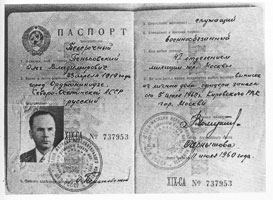
Penkovsky's passport delivered to him
before his trip to London
in 1961.
|
| |
Oleg
Penkovsky was a colonel in the Russian KGB who worked closely
with MI666 and the CIA.
The
highly privileged colonel Penkovsky was a British Secret
Service agent from his youth, who claimed to be dissatisfied
with the Soviet System because he wasn't promoted fast enough!!
Most likely he was a double of the real Oleg Penkovsky!!
|
|
|
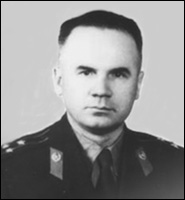
Colonel Oleg Penkovsky
(1919–1963). |
The
decapitation of the Soviet High Command was supposed to take place
just before the B52's and Vulcan bombers were over Moscow.
In
1958, Uncle "SAP" signed a treaty called the US-UK Mutual
Defense Agreement . That treaty was signed on the false premise that
Churchill had the hydrogen bomb.
As
well as giving Churchill access to U.S. made hydrogen bombs, it also
gave him access to the Pentagon's miniature atomic bombs. Those miniature
nukes were designed to be fired by the Davy Crockett tactical nuclear
recoilless gun.
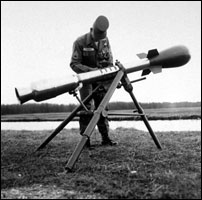
A "Davy Crockett" sized mini-nuke
on its launcher.
|
| |
Penkovsky's
mission was to plant a "Davy Crockett" sized mini-nuke
in the Russian ministry of defense HQ and decapitate
the entire Soviet High Command.
The
mini-nuke came from the Pentagon's arsenal and was modified by
MI666 to work with a timer.
|
|
|

HQ of the Russian Ministry
of Defense in Moscow. |
"Businessman"
Greville Wynne
first arrived in Moscow in December 1960, as part of a 12-member trade
delegation. His spying cover was salesman for 8 British companies
specializing in cement, metallurgy, engine fuels, computers etc., etc.
Before
the arrival of the British trade delegation, Oleg Penkovsky approached
the American embassy several times but was rebuffed as an agent
provocateur or a KGB plant. Unknown to Wynne, some of his fellow
"businessmen" worked for MI6, and were keeping an eye on him.
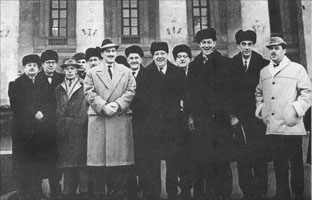
Greville Wynne on extreme right with the
British "trade delegation" in front of the
Bolshoi Theater, Dec. 1960. |
|
"Businessman"
Greville Wynne" was his liaison with MI666 in London.
Before the arrival of the British "trade delegation,"
Penkovsky made several attempts to contact the American
embassy but was rebuffed every time.
Wynne
and Penkovsky made contact in Moscow during the visit of
the "trade delegation."
|
|
|
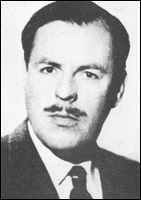
MI666 Greville Wynne
(1919–1990).
|
After
meeting Wynne in Moscow, Penkovsky was assured that MI666 would do everything
in its power to get him accepted by the U.S. as a genuine Soviet
turncoat or spy.
Under
the guise of a Russian trade delegation, Penkovsky the spy arrived in
London on April 20, 1961.
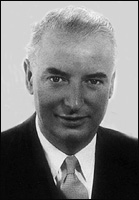
Spymaster Dick White (1906–1993).
MI6 director from '56 to '68. |
|
Sinister
spymaster Sir Dick White was the "brains" behind
the Cuban Missile Crisis.
Penkovsky (code name HERO) met Sir Dick White and John McCone
in London.
Both
men were delighted to have such a high ranking
spy in the Soviet High Command. |
|
|
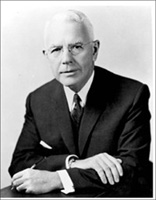
John
McCone (1902–1991).
CIA director from '61 to '65.
|
At
first McCone was skeptical (was this "perfidious Albion" at
work again) and he wanted to give Penkovsky a polygraph or lie detector
test. White adamantly refused and the matter was soon dropped. The lie
detector test would have revealed that Penkovsky was a British spy from
his youth.
Penkovsky
had a secret meeting with Lilibet and President Kennedy!!
While
he was debriefed by White and McCone, Penkovsky said that he wanted
to be recognized by Queen Elizabeth and President Kennedy for the "great
work" he was about to do for the "free world." Because
he ended up a failure, no pictures of those historic meetings have been
released to the public.

Penkovsky in a British Army colonel's uniform, London, 1961.
|
| |
Royalty
and U.S. Presidents are not supposed to meet with despicable
spies and turncoats, so he was given the rank of colonel
in both armies.
Under
the guise of a British army colonel, Penkovsky was secretly
introduced to Lilibet.
Under
the guise of a U.S. army colonel, Penkovsky was secretly
introduced to President Kennedy. |
|
|
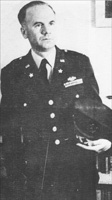
Penkovsky in a U.S. Army colonel's uniform, London, 1961.
|
Greville
Wynne wrote a tell-all memoir after his release from a Soviet prison.
Penkovsky was absolutely determined to have an audience with Queen Elizabeth,
so White arranged for a secret audience at Windsor Castle:
He
was also impressed by the popularity of the Royal Family, but seemed
unable to grasp their function in a constitutional monarchy. 'You
can often see the Queen herself mixing in the crowds at a polo match,
with just a few plain-clothes detectives in attendance. I told him.
"I must see her he exclaimed. 'I must talk
with her, Greville. She ought to know what I am doing for the cause
of peace. I'm sure she will speak to me.' It was only with
difficulty I held him off, trying to make him understand that she
could not under any circumstances be involved with what we were doing,
it just didn't work that way. (Wynne, The Man From
Odessa, p. 228).
Wynne
also described a top secret visit he and Penkovsky had with President
Kennedy, in July of the same year:
President
Kennedy was waiting for us in the company of three other men whose
names were never disclosed to me. As soon as he saw us enter, he came
over to us with his youthful energetic stride, smiling and with his
hand outstretched, and told me, 'I've heard about the work you've
done for us. I'd just like to add my personal thanks, and the thanks
of the United States. Then he turned to Alex and drawing him gently
to one side with a hand on his arm, I heard him say, 'Oleg Penkovsky,
I want to assure you, from what I know about the situation within
the Soviet Union, that I am very aware of all that you've done to
help the cause of peace in the world, not only for the West, but for
the sake of your own people as well.' The President's sincerity and
warmth as he said these words were unmistakable. He continued. If
only it were possible to tell everyone of the efforts you have made,
the name of Oleg Penkovsky would be acclaimed throughout the world.
(Wynne, The Man From Odessa, p. 230).
As
publicity for his memoirs, The Man From Odessa, Wynne appeared
on the BBC, and reiterated the statements that he made in his book about
meeting the Queen and President Kennedy.
Penkovksy
was fully briefed on the operation of the Davy Crocketts!!
Penkovksy
did not live to tell how the nukes were smuggled into Moscow. He just
knew that the High Command, who controlled the Doomsday Device, had
to be eliminated:
As
a strategic officer, a graduate of two academies, and having worked
for some time in the General Staff, I know where the sensitive spots
are. I am convinced that my viewpoint is absolutely correct, namely
that in case of a future war, at H-hour plus two minutes, all of these
critical targets such as the General Staff, the KGB Headquarters on
Dzerzhinsky Square, the Central Committee of the Party, which organizes
everything, and similar targets must all be blown up by pre-positioned
atomic bombs rather than by means of bombs dropped from aircraft or
rockets, which may or may not hit the vital targets.
(Schecter & Deriabin, The Spy Who Saved the
World, p. 75).
At
that momentous time in history, when the fate of the entire world hung
in the balance, both the GRU and the KGB were under the control of one
man: Ivan "The Terrible" Serov.
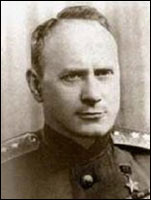
Ivan Serov (1905-1990).
KGB and GRU chief during the
Cuban Missile Crisis.
|
| |
Amazingly,
the GRU and the KGB—normally bitter rivals—had
the same chief during the Cuban Missile Crisis.
He
was a British Secret Service agent named Ivan "The
Terrible" Serov.
Russian
patriot Marshall Rodion Malinovsky was top priority for
elimination by Penkovsky.
|
|
|
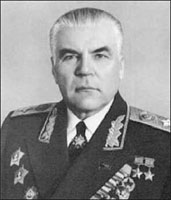 Rodion Malinovsky
(1898–1967).
Rodion Malinovsky
(1898–1967).
Minister of Defense from '57 to '67. |
As
defense minister, Marshall Rodion Malinovsky's office was in the Russian
Ministry of Defense Building. That was priority #1 for Penkovsky. He
was sure that his Davy Crocketts could eliminate all the top military
leaders before the B52's and the Vulcan bombers arrived:
In
our Soviet Army we have a five-kiloton, a ten-kiloton, and bigger
weapons, but they have not yet been able to produce a one-kiloton
weapon. Our scientists are still working on it. I know this exactly.
Such weapons would not need to be set within the buildings themselves,
but there are many adjacent buildings where they can be concealed.
Dwellings and stores are adjacent. For example, there is a large Gastronom
[food store] next to the KGB Headquarters. (Schecter
& Deriabin, The Spy Who Saved the World, p. 75).
Amazingly,
Penkovsky's spying was not done in a corner. His Moscow handler worked
out of the British Embassy . . .
just a stone's throw from the Kremlin.
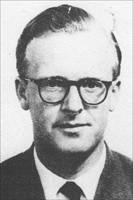 Roderick "Rauri
Chisholm
Roderick "Rauri
Chisholm
(1925–1979).
|
| |
Penkovsky
would meet Janet Chisholm, wife of Station Chief Rauri,
at Tsvetnoy Boulevard Park in Moscow.
Under
the guise of giving candy to her kids, he actually gave
her top secret documents about the Soviet nuclear
arsenal.
Even
children played a deadly role in the doomsday
scenario called the Cuban Missile Crisis!!
|
|
|
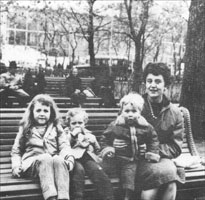 Janet Chisholm
and her 3 children in Tsvetnoy Boulevard Park, Moscow, 1961.
Janet Chisholm
and her 3 children in Tsvetnoy Boulevard Park, Moscow, 1961. |
Many
people in the U.S. government were still skeptical of Penkovsky and
believed him to be a disinformation agent planted by the Soviets.
The man who assured President Kennedy that he was a genuine spy
was named Maurice Oldfield.
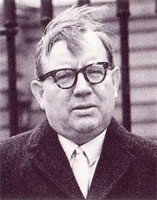
Sir Maurice Oldfield (1915–1981).
MI666 director from '73 to '81.
|
| |
Under Sir Dick White, Maurice Oldfield was the liaison between
MI6 and the CIA during the Cuban Missile Crisis.
He
assured Kennedy that Penkovsky could be relied upon to decapitate
the Soviet high command.
A
"practicing Catholic," Oldfield would have been
a great helper for Guy Fawkes.
|
|
|

Oldfield was knighted by the
Twins in 1975.
|
Some
people in the Kennedy Administration were still skeptical about Penkovsky.
Oldfield's job was to reassure the doubters that he was genuine:
It
cannot, however, be too strongly stressed that the one vital link
in those months and weeks leading up to the Cuban missiles crisis
was Maurice Oldfield and arising out of this the friendship which
sprang up between him and the US President. It was his advice, his
steadfast advocacy of Penkovsky and his ability to get speedy answers
to Kennedy's persistent questioning on technical matters which more
than anything else enabled the Cuban threat to be dealt with in the
most practical manner. The militants of the Kennedy administration,
led by Acheson, urged an air attack to wipe out the missiles, while
McNamara, the Defense Secretary, was not simply against this, but
often gave the impression of merely hoping that something would turn
up to change the situation. Oldfield was able to score by showing
the President, through Penkovsky's testimony, not only where to concentrate
for air pictures of the installation of Soviet missiles in Cuba, but
even more importantly to stress that Khrushchev's bluff could be called
by an ultimatum. (Deacon,'C' A Biography of Sir Maurice Oldfield, p. 136).
Oldfield
later became director of MI6. In that position he was responsible for
the appointment of Margaret Thatcher as prime minister. He was also
responsible for "The Troubles" in Northern Ireland.
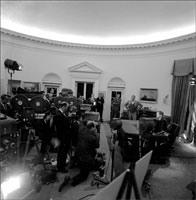
President
Kennedy preparing for
his dramatic address to the nation.
|
| |
On the very next day (October 23) after Kennedy made his "full retaliatory response" speech, Penkovsky's was arrested.
MI666 knew immediately that Penkovsky was arrested but only prime minister Macmillan was told.
Not even their "colleagues" in the CIA were notified!! |
|
|
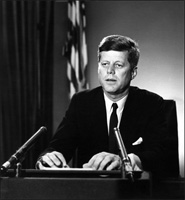
President Kennedy making his "full retaliatory response"
speech. |
On
the day following President Kennedy speech, Penkovsky was arrested. Moscow was about to explode
like the English Parliament building and it wasn't even Guy Fawkes Day
yet!
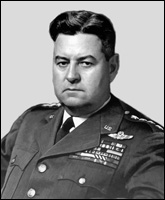
"Bombs Away" General Curtis LeMay
(1906–1990).
|
| |
"Bombs Away" General Curtis LeMay and General Thomas Power would
have made great helpers for Guy Fawkes.
Instead
of blowing up the Parliament building, both men wanted to
blow up the Soviet Union!!
Nothing
has changed in 400 years, Jesuits still have an overwhelming
desire to blow things up. |
|
|
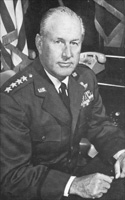
General Thomas Power
(1905–1970). |
There
is no doubt that the Pentagon feared the Russian Doomsday Device, and
they dreaded the prospect of dying a horrible death from radiation.
The
drama was just as intense in Moscow as in Cuba and the Pharaonic Zone:
There
was one more piece of urgent business falling to the KGB secret police.
For the past year, a Soviet military intelligence officer named Colonel
Oleg Penkovsky had been providing top secret documents to his British
and American handlers. Among the documents now in the hands of the
CIA was the technical manual for the R-12 missile system, together
with the layout of a typical missile site and detailed descriptions
of the various readiness levels. Penkovsky had been under suspicion
for weeks, but the KGB delayed moving against him because it wanted
to smash the entire spy ring.
With the Cold War on the verge of turning hot, Penkovsky could not
be permitted to feed any more information to the Americans. Plainclothes
agents burst into his apartment on the Moscow River and arrested him
without a struggle. Because of the importance of the case, the head
of the KGB, Vladimir Semichastny, decided that he would take personal
charge of the interrogation. He ordered his men to bring the traitor
to his third-floor corner office in the Lubyanka. They sat him down
at the other end of a long conference table.
Fearing torture or worse, Penkovsky immediately offered to cooperate
with the KGB "in the interests of the motherland."
Semichastny looked at him with distaste. "Tell me what harm you
have inflicted on our country. Describe it all in detail, with the
most pertinent facts."
(Dobbs, One Minute to Midnight, pp. 56-57).
Shortly
after the Cuban Missile Crisis, Greville Wynne was arrested in Bucharest,
Hungary. This was astonishing because he was not alerted when Penkovsky
was arrested.
Greville
Wynne was used as the fall guy for Penkovsky!!
The Russian Guy Fawkes faced a
firing squad and most of his accomplices were arrested. British Secret
Service agent Nikita Khrushchev lost most of his power after the Cuban
Missile Crisis and he was overthrown in 1964.
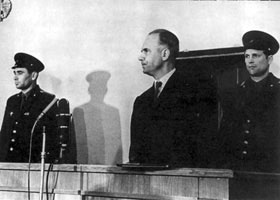
Oleg Penkovsky on trial for
his life in Moscow.
|
| |
For
his treason, Penkovsky was tried and then faced a firing
squad.
His
body was cremated and thus ended the career of the man that
President Kennedy said "would be acclaimed throughout
the world."
|
|
|
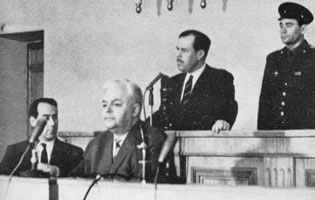
Greville
Wynne on trial in Moscow. |
Wynne
was just a scapegoat or dupe for the entire operation. Sacrificed to
cover up the role of Winston Churchill, Harold Macmillan, and MI6.
Greville
Wynne was the son of a poor coal miner from Wales. He was dyslexic and
had a low IQ. Usually a spy has to have a very high IQ . . . and a very
low moral standard.
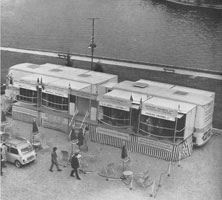
Greville Wynne's mobile "trade exhibition"
in Bucharest, Hungary.
|
| |
Penkovsky
was arrested on October 23, 1962.
At
that time, Greville Wynne was hosting a "trade exhibition"
in Bucharest, Hungary.
Sir
Dick White never bothered to inform him that he was in mortal
danger.
Wynne
was arrested on November 2, 1962. |
|
|
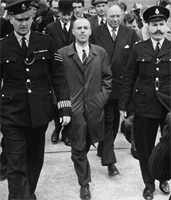
Greville Wynne arriving in London after
his release, April 1964. |
Because
he was a British subject, the Soviets did not torture him physically
like Penkovsky, but he endured horrendous living conditions in various
Soviet prisons. He could tell them nothing because he was just a low
level operative, recruited to protect Churchill, Macmillan, and MI6.
When
they finally realized that he was just a "useful idiot" for
MI6, they exchanged him for a Russian spy named Gordon Lonsdale.
If
the Russian Guy Fawkes and Wynne were successful, their statues would
be right now outside the British Parliament. They both vanished into
obscurity, because, in warfare, the losers are never remembered.
Wynne
did get partial revenge on Churchill, Macmillan, and MI6 by writing his memoirs
and revealing how he was double crossed by the very people that recruited
him as a spy.
Vital
Links
References
Bower,
Tom. The Perfect English Spy: The Life and Times of Sir Dick White.
St. Martin's Press, New York, 1995.
Deacon,
Richard. 'C'
A Biography of Sir Maurice Oldfield. Macdonald & Company,
London, UK, 1984.
Dobbs,
Michael. One Minute to Midnight: Kennedy, Khrushchev, and Castro
on the Brink of Nuclear War. Alfred A. Knopf, New York, 2008.
Duns,
Jeremy, Dead Drop: The True Story of Oleg Penkovsky and the Cold
War's Most Dangerous Operation. Simon & Schuster, New York,
2013.
Fraser,
Antonia. Faith and Treason: The Story of the Gunpowder Plot.
Doubleday & Co., New York, 1996.
Kozak, Warren. LeMay: The Life and Wars of General Curtis LeMay. Regnery Publishing, Washington City, 2009.
Schecter, Harold
L. & Deriabin, Peter S.
The Spy Who Saved the World. How a Soviet Colonel Changed the Course
of the Cold War. Charles Scribner's Sons, New York, 1992.
Wynne, Greville.
The Man From Moscow: The Story of Wynne and Penkovsky. Hutchinson
& Co., London, UK, 1967.
Wynne, Greville.
The Man From Odessa: The Secret Career of a British Agent. Granada
Publishing Co., London, UK, 1981.
Copyright
© 2020 by Patrick
Scrivener
Back
to Main Menu |























